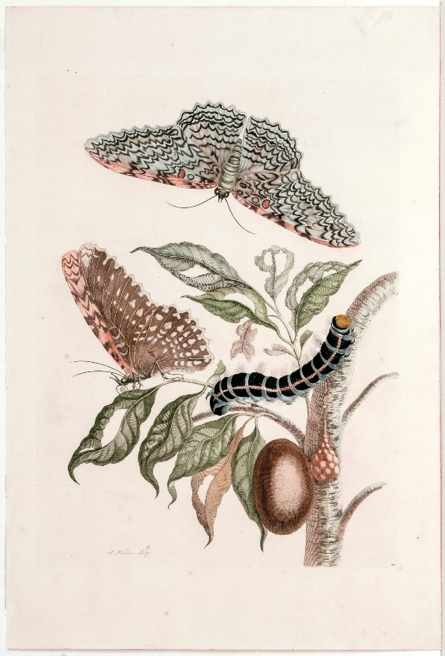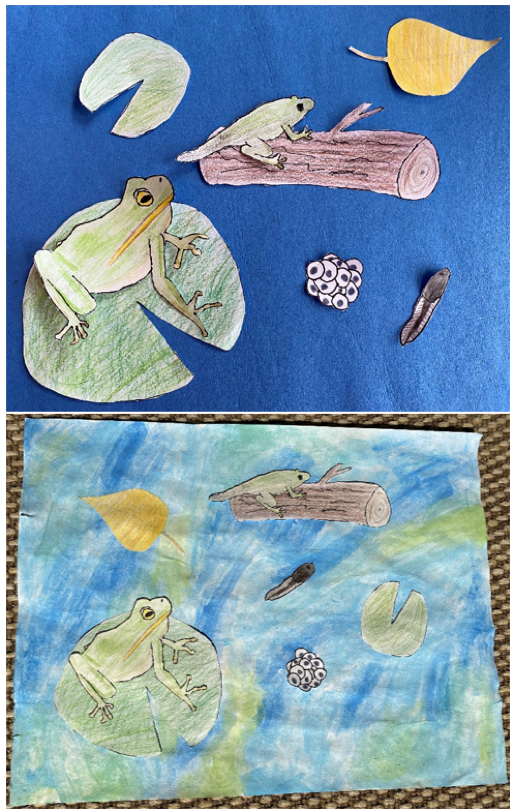Activity Guide by Kate Kwasneski
Intern, Grinnell College Museum of Art
Learn
Many animals have a life cycle, where the animal looks completely different at the beginning of its life than at the end. The most noticeable examples of this are tadpoles who turn into frogs and caterpillars who turn into butterflies.
We didn’t always know these life cycles. We learned about the life cycles of plants and animals from some pretty dedicated scientists called naturalists. These naturalists carefully observed the species they wanted to know about and took notes and did drawings every step of the way. Before naturalists, people thought that the caterpillar and the butterfly were two completely different animals, because they looked so different!
Maria Sibylla Merian was a naturalist from the 17th century who spent her life studying the life cycles of plants and insects. She was born in Germany and spent her life as an artist at a time when most women were not allowed to have jobs. Maria Sibylla Merian specialized in studying butterflies. She was one of the first people to include both eggs and the plants that butterflies lived on in her study of butterfly life cycles.
Look
Look at this scene. Does it look like a science diagram, a work of art or both? How is it different from most science diagrams you have seen? Can you picture what these butterflies would look like by looking at this picture?
Create
Do some research about a plant or animal you really like, and draw its life cycle! Maybe you want to draw how a daisy grows from a seed. Maybe you want to draw how a frog develops from an egg, like I did. The internet can be a good resource for learning more about the life cycle of your specific plant or animal.
A lot of the time, life cycle diagrams are drawn in the same format. The different forms of the animal are drawn in a circle. Maria Sibylla Merian did not use this format. Instead, we see that her drawing looks like a scene from nature. It is both informative and art!
Be sure to use lots of detail, like Merian did, and to do your best work. Think about how you can show a life cycle that looks like a scene from nature. Think through different ways of arranging your elements, like I did here.
Write
Write down what you know about your organism’s life cycle, or what you learned from looking it up. What are some fun facts that make it interesting? Or, you could imagine that you are your organism. What is it like to exist at each of the different stages?
Read
If you want to learn more about Maria Sibylla Merian, here are a few books about her!
Maria Sibylla Merian: Artist, Scientist, Adventurer by Sarah B. Pomeroy and Jeyaraney Kathirithamby
The Girl Who Drew Butterflies: How Maria Merian’s Art Changed Science by Joyce Sidman


